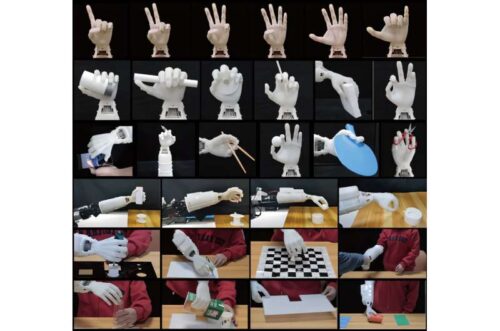Imagine a prosthetic hand that moves like a human, performs tasks, and understands your voice. This technology could change everything for amputees. Want to know more?

A team from the University of Science and Technology of China (USTC) has developed a lightweight prosthetic hand with 19 degrees of freedom (DOF), mimicking human hand functions. This advancement has the potential to aid in the rehabilitation and daily activities of millions of upper-limb amputees.
The human hand has 23 DOF, contributing to about 54% of the body’s total movement ability, yet it weighs only around 1/150 of the body’s weight. Traditional prosthetic hands, relying on motor-driven systems, often struggle with balancing DOF and weight due to low power density. Designing better prosthetics requires optimizing both dexterous movement and comfort.
The researchers used shape-memory alloys (SMA) with high power-to-weight ratios as artificial muscle actuators to overcome this. They applied a tendon-driven transmission system that amplifies SMA force and reduces resistance. The design includes 23 sensor units in the fingers and wrist for precise joint control.
The prosthetic also features a cooling module with 38 SMA actuators, providing 19 active DOF. Weighing just 0.37 kg, it offers human-like dexterity and can perform tasks such as combing hair, writing, shaking hands, exchanging business cards, and playing chess.
The prosthetic hand features integrated voice recognition technology, enabling a simple, user-friendly, and affordable human-machine interaction system. It supports 60 languages and 20 dialects, with a recognition accuracy of 95% and a response time in milliseconds, making it highly suitable for amputees.
Additionally, the hand can operate scissors, use a smartphone, and perform complex sign language gestures. It replicates 33 traditional hand-grasping motions and adds six advanced ones, covering many practical applications.
The research marks a significant advancement in prosthetics. The new technology could transform amputees’ lives, allowing for more freedom of movement, easier daily tasks, and restoring confidence. It also shows great promise for engineering, offering a solution for both humanoid robot dexterity and high-performance prosthetic hand development.
Reference: Hao Yang et al, A lightweight prosthetic hand with 19-DOF dexterity and human-level functions, Nature Communications (2025). DOI: 10.1038/s41467-025-56352-5







